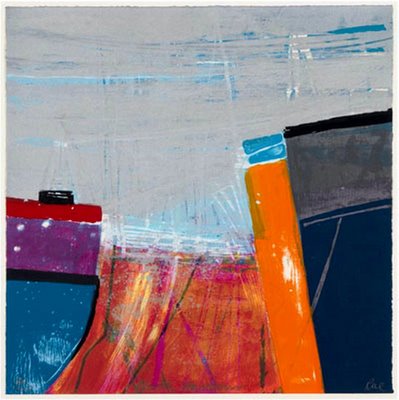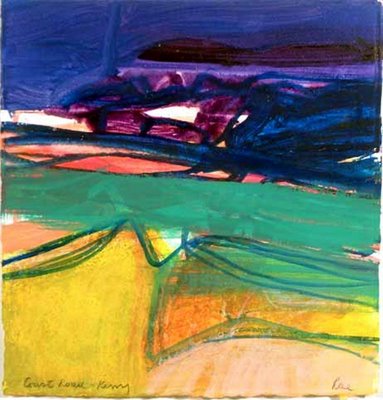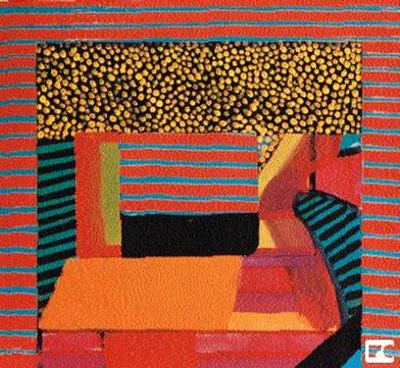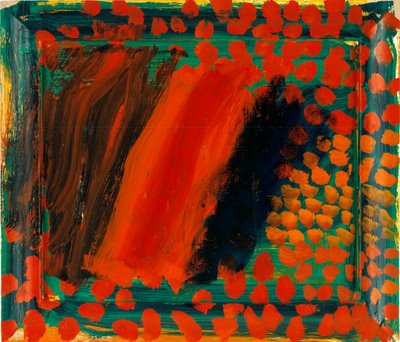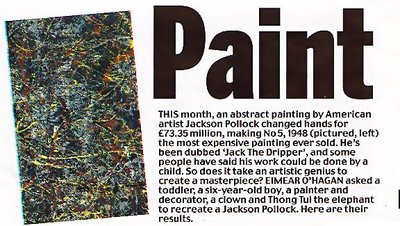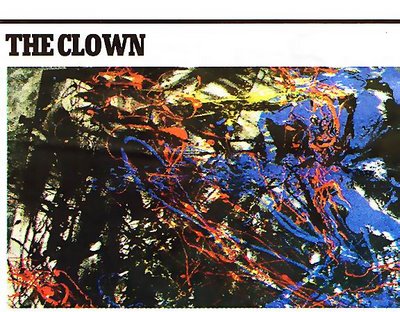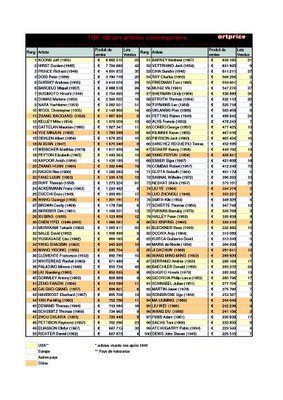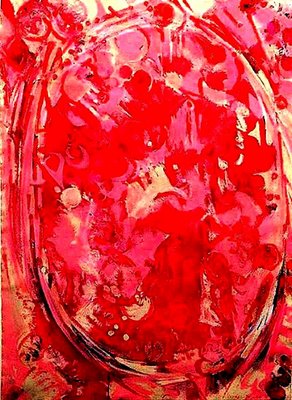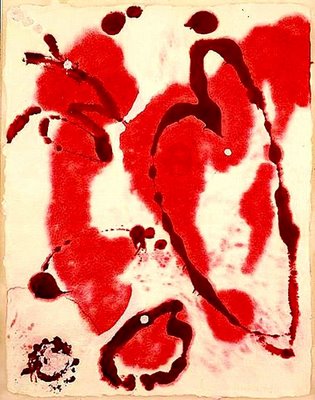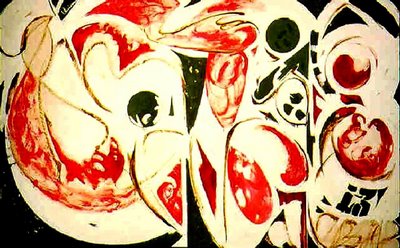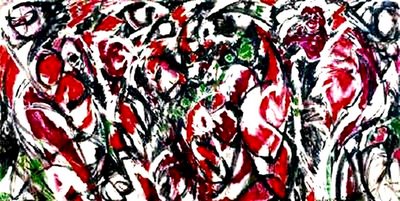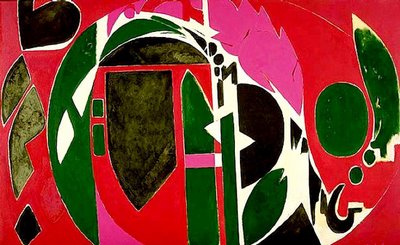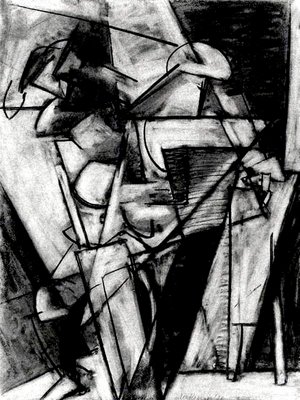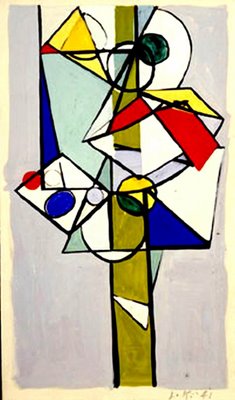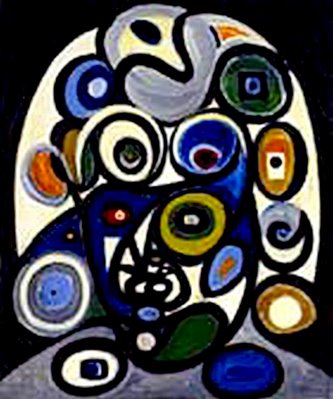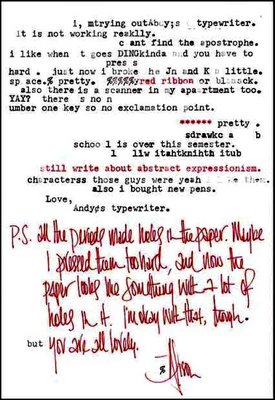Artlover in Antibes
An art lover, who lives in the South of France, wants to share with the world ideas that will compliment the art we love. Let's exchange some comments to make our art world a more interesting place.
L’amateur d'art, qui vit sur la Côte d'Azur et qui veut partager son univers de l’art peut échanger avec nous pour donner au monde artistique une place plus intéressante.
Français/English
Thursday, November 23, 2006
Wednesday, November 22, 2006
Top Of The Pops - UK 2006
artlover788
According to a recent BBC poll on the artists' artists; here are the Top 10 in 2006:
Freud's portrait of an ex-junkie model
fetched £3.9m at auction
He beat the likes of Rembrandt and Van Gogh - who also made the top ten - to become the artists' favourite artist.
Other modern day giants such as Howard Hodgkin and David Hockney also featured in the poll, carried out by The Great Art Fair.
But so-called Young British Artists such as Tracey Emin, Chris Ofili and Damien Hirst were overlooked.
Hirst, who won the Turner Prize in 1995, garnered only one vote from the 500 artists polled, while Emin and Ofili failed to get a single nod, although 70% of the top ten artists are still alive.
Old Masters such as Titian, Velasquez, Goya, Vermeer, Da Vinci and Botticelli are also overlooked in favour of more contemporary artists.
|
| TOP TEN ARTISTS 1. Lucien Freud 2. Howard Hodgkin 3. David Hockney 4. JMW Turner 5. Antoni Tapies 6. Rembrandt 7. Jack Vettriano 8. Barbara Rae 9. Frank Auerbach 10. Van Gogh Source: The Great Art Fair |
"We have seen many statistics and results about the British public's favourite artistic talents, and can read countless critic's profiles expounding the virtues of a variety of names in art, but this is the first poll to be conducted amongst working artists," said Great Art Fair spokesman.
Freud was born in Berlin in 1922, the grandson of Sigmund Freud, and moved to London with his family in 1933.
He has been described as "the greatest painter of our time" and his work can be found in museum and private collections across the world.
The Great Art Fair, the UK's largest art show, will be held at London's Alexandra Palace from 30 November to 3 December.
Tuesday, November 21, 2006
Et Alors - Pt 6
Hey, you want to see something quite obscene? Well, what d'you think?
ART MARKET WATCH
Nov. 16, 2006
While works by Willem de Kooning and Andy Warhol are the gold standard at the uptown auction houses, at Phillips, de Pury & Co. in Chelsea the coin of the realm is Richard Prince and Christopher Wool. The room is fairly raw and much smaller, the crowd certainly is younger and prettier, and the totals considerably less. Phillips' contemporary art sale of Nov. 16, 2006, totaled $29,694,800, with 60 of 68 lots finding buyers, or 88 percent.
And despite a sense that the sale was lackluster, auction records were set for 18 artists. Among these are several names relatively new to the evening sales, including Hernan Bas ($168,000), Jim Lambie ($144,000), Qiu Shi-Hua ($137,000), Banks Violette ($117,000) and Mark Handforth ($114,000). Clearly, Phillips remains a place for market movers to put new names in play.
Also notable are the new records set at Phillips for regulars in the contemporary auction market: Mike Kelley ($2,704,000), Andreas Gursky ($2,480,000), Richard Prince ($2,256,000), Christopher Wool ($1,696,000), Tom Friedman ($856,000), Julian Schnabel ($822,400), Karen Kilimnik ($420,000), Jack Pierson ($352,000), George Condo ($228,000), Wilhelm Sasnal ($212,000) and Fred Tomaselli ($192,000).
Prices include the auction-house premium of 20 percent on the first $200,000 and 12 percent on the remainder.
The top lot was Mike Kelley's Deodorized Central Mass with Satellites (1991-99), a room-sized installation of nine hanging "planets" made of found stuffed animals, which sold for $2,704,000, below the presale low estimate of $3,000,000. The work was previously exhibited only in Germany, originally in a smaller form at the Jablonka Gallery in Cologne. The buyer was megacollector Peter Brant, probably bidding against the reserve.
Another top lot was a Richard Prince nurse painting that was first exhibited at Barbara Gladstone Gallery in 2003. Tender Nurse (2002) sold for $2,256,000 to Hollywood B-movie producer Stavros Merjos after some typically theatrical cajoling by auctioneer Simon de Pury. "Can you go up just one last little bit," he asked, urgently, "One tiny, tiny little bit?"
By the way, de Pury's new practice of marking bought-in lots by bringing the hammer down sharply, without saying "passed" as is the common practice at other New York auction houses, may not be in exact compliance with the New York commercial code rules governing auctions.
Both the Kelley and the Prince were reported to be among perhaps 10-20 lots being sold by hedge-fund manager Adam Sender, who has become a major player in the contemporary market while amassing a collection of some 800 artworks. Sender is the first hedge-fund collector to test the market with a substantial sell-off, though his curator Todd Levin has told reporters that the deaccessions are just part of a normal fine-tuning of his holdings. The 37-year-old Sender keeps a modest website for his art at http://sendercollection.com
The rhythm of the sale was momentarily interrupted after a life-sized carousel by Charles Ray, Revolution Counter-Revolution (1990) -- the carousel spins one way while the horses move slowly in reverse -- which carried a presale estimate of $1,500,000-$2,000,000, was bought-in without any bidding. At that point, both SoHo dealer Jeffrey Deitch and Sam Orlofsky from the Gagosian Gallery got up and approached Phillips' specialist Michael McGinnis. A few moments later, de Pury reopened bidding on the lot, and Deitch bought it, bidding against the reserve, for $1,400,000 at the hammer, $1,584,000 with premium. Apparently, the Gagosian Gallery did not bid.
After the sale, Deitch said he never bids "against the house," but in this case he made an exception. "It's a major work," he said. "I couldn't see it being packed up and shipped back to Italy," where it had been in the collection of Massimo Sandretto. While the purchase could have been made after the auction, reopening the lot allowed the work to qualify as an official sale rather than a buy-in.
Among buyers spotted in the room was Kim Heirston, who won the record-setting Jim Lambie lot, Green Door (2004) -- a pair of wooden doors, cut into strips and hinged like folding screens, described in the catalogue as a play on William Blake's Doors of Perception as well as the classic rock group The Doors -- for $144,000. Heirston also snagged Tim Noble and Sue Webster's 1999 sign, Vicious, for $192,000, below the presale low estimate of $200,000.
Real estate mogul Aby Rosen won the record-setting Fred Tomaselli work from 1992, Colorado River, an almost-abstraction of resin, hemp leaves and pills that turns an aerial view of a river valley into a cosmic vista, paying $192,000 (est. $100,000-$150,000).
The buyer of Julian Schnabel's mural-sized (ca. 8 x 12 ft.) Bob's World, a classic plate painting from 1980, was Swiss art historian Petra Gilow, who said after the sale that she was acting for a Swiss private collector, and that the painting would probably end up in a museum. The record-setting price was $822,400, well above the presale high estimate of $600,000.
Other buyers, according to the Baer Faxt, included Goff and Rosenthal, who won the Hernan Bas, and Max Davidson IV, who bought Paul Pfeiffer's 2001 Race Riot video installation for $144,000.
Wednesday, November 15, 2006
Et Alors - Pt 5
According to a recent BBC article, there's yet another absurdity reported.....
$15m sale beats Bacon art record
The painting was based partly on Bacon's friend Henrietta Moraes
A Francis Bacon painting showing a woman who has just taken drugs has been sold for $15m (£7.9m), a record for a work by the Dublin-born artist.
Version No. 2 of Lying Figure with Hypodermic Syringe, created in 1968, was bought by an anonymous telephone bidder at Sotheby's in New York.
The masterpiece was from the collection of Roger Vanthournout, a Belgian furniture-maker who died last year.
The auction set 15 records in all, one of them for Britain's Anish Kapoor.
Kapoor's untitled carved alabaster sculpture from 1999 generated $2.3m (£1.2m), about five times the sum it had been predicted to earn.
Warhol sales
There were also several works by Andy Warhol for sale, with Flowers, one of the pop artist's seminal images, fetching $6.8m (£3.6m).
Again it exceeded expectations, as did Warhol's Martinson Coffee, which went for $3.8m (£2m).
Francis Bacon was born in Dublin in 1909 and died at the age of 82
Other highlights included Willem de Kooning's Untitled XXX, sold for $10.7m (£5.6m), and Roy Lichtenstein's $6.6m (£3.5m) Black and White Sunrise.
The record-breaking picture by Bacon features a reclining female nude and was inspired partly by his friend Henrietta Moraes.
Her arm is pierced by a needle, although Bacon claimed it was there for visual reasons only and had no sinister connotations.
Auctioneer Tobias Meyer, who is also Sotheby's worldwide head of contemporary art, said the company was "thrilled" with the sale, which generated a total of $125m (£66m).
Wednesday, November 08, 2006
Et Alors - Pt 3
artlover368
La vente de l´année... [nov. 06]
Les ventes d'art impressionniste et moderne sont le clou de la saison des ventes new-yorkaises. Comme chaque année, les catalogues de Sotheby´s et Christie´s proposent des pièces exceptionnelles.
Cette année, Sotheby´s disperse une importante nature morte de Paul CÉZANNE, Nature morte aux fruits et pot de gingembre. L´œuvre, réalisée vers 1895, à l´aube de l´ère moderne, avait été acquise 11 millions de £ (16,4 millions de $) en juin 2000 chez Christie´s Londres. Cette année, la pièce est proposée le 7 novembre avec une fourchette d´estimation optimiste de 28 - 35 millions de $.
En parallèle, le lendemain, Christie´s contre-attaque avec la dispersion d´une incroyable sélection d´œuvres de la Sécession Viennoise. La pièce majeure est un portrait d´Adele Bloch-Bauer, provenant de la collection Ferdinand et Adele Bloch-Bauer, réalisé par Gustav KLIMT en 1912 et estimé 40 - 60 millions de $. Déjà en 2006, le Portrait of Adele Bloch-Bauer (1907), acquis pour 135 millions de dollars par Ronald S. Lauder, devenait l´œuvre la plus chère du marché primaire.
Trois autres pièces majeures de Klimt, des paysages, seront dispersées le même soir : Houses in Unterach on Lake Atter (Häuser in Unterach am Attersee), Apple Tree I (Apfelbaum I) et Birch Forest (Buchenwald). En plus de ces 4 œuvres de Klimt, Christie´s propose plusieurs œuvres d´Egon SCHIELE. Le plus important de la vacation est un tableau double face de 1915, Einzelne Häuser (Häuser mit Bergen) - Monk I (fragment, verso), estimé 20 - 30 millions de $. L´amateur se verra aussi présenter deux dessins (aquarelle et gouache) : Zwei Mädchen auf einer Fransendecke (recto); Akt eines stehenden Knaben, Kniestück (verso) (est. 5 - 7 millions de $) et Kniender Halbakt nach links gebeugt (est. 6 - 8 millions de $).
Mais cette fois encore, c´est autour de Pablo PICASSO que l´on attend les plus important résultats de la vente. En effet, Christie´s propose à la vente Portrait de Angel Fernández de Soto, une œuvre peinte en 1903, en pleine période bleue. La pièce avait été acquise 26,5 millions de $ en 1995. Elle est proposée cette semaine à 40 - 60 millions de $. Selon Artprice Indicator, l´outil d´actualisation des prix proposé par Artprice, cette pièce pourrait valoir aujourd´hui près de 70 - 75 millions de $.
Au total, Christie´s va disperser 85 lots le 8 novembre. Avec de telles estimations, cette vacation pourrait décrocher un produit de vente record.
Sale of the year... [nov. 06]
The impressionist and modern art sales are the centrepiece of the New York auction season. As ever, Sotheby's and Christie's catalogues include some exceptional pieces.
This year, Sotheby's is offering a major still life by Paul CÉZANNE, Nature morte aux fruits et pot de gingembre. It was painted around 1895, on the cusp of the modern era, and was bought for GBP 11 million (USD 16.4 million) in June 2000 at Christie's London. This year, it goes back under the hammer on 7 November with an optimistic price estimate of USD 28-35 million.
The next day, Christie's counterattacks by putting up a stunning selection of works from the Viennese Secession. The star piece is a Gustav KLIMT portrait of Adele Bloch-Bauer, from the Ferdinand and Adele Bloch-Bauer collection - Klimt's second painting of the young woman, made in 1912 and estimated at USD 40-60 million. Portrait of Adele Bloch-Bauer I (1907) has already been bought once in 2006, for USD 135 million by Ronald S. Lauder, making it the most expensive work ever to be sold on the primary market.
Three other major Klimt works, all landscapes, are up for sale the same evening: Houses in Unterach on Lake Atter (Häuser in Unterach am Attersee), Apple Tree I (Apfelbaum I) and Birch Forest (Buchenwald). Besides these four Klimts, Christie's is also offering a number of lots by Egon SCHIELE. The most important is a canvas from 1915 painted on both sides: Einzelne Häuser (Häuser mit Bergen) - Monk I (fragment, verso), estimated at USD 20-30 million. Schiele enthusiasts can also find two drawings (in watercolour and gouache): Zwei Mädchen auf einer Fransendecke (recto); Akt eines stehenden Knaben, Kniestück (verso) (estimated at USD 5-7 million) and Kniender Halbakt nach links gebeugt (estimated at USD 6-8 million).
But, once again, it is Pablo PICASSO that is expected to command the top price. Christie's is selling Portrait de Angel Fernández de Soto, painted in 1903 at the height of his blue period. The picture was acquired in 1995 for USD 26.5 million. This week it is estimated at USD 40-60 million. According to Artprice Indicator, Artprice's price update tool, the work could today be worth USD 70-75 million.
Overall, Christie's is putting up 85 lots on 8 November. With estimates on this scale, we could well be looking at a new all-time record for turnover at a single auction.
Friday, November 03, 2006
An under-rated wife......Lee KRASNER.
In the wake of the latest 'crazy' art price of US$140million being paid by some 'overloaded' Mexican businessman-cum-art-speculator for a Jackson POLLOCK painting, it's time to remember the lady who nurtured this tortured genius to his greatness; and some say at much to her own cost of her own creativity. Fortunately, she outlived him and was able to show the world that she was a great painter in her own right and the legacy of her art is an affirmation to the world that there's plenty of room for the real talent in the world of art!
After graduating from the academy, Krasner took college courses toward a teaching certificate and worked as a model and waitress. In spite of the onset of the Great Depression, she did not give up hope of becoming a full-time professional artist. That goal seemed more attainable when, in 1934, she was accepted for employment by the Public Works of Art Project, the first of the New Deal art patronage programs. Like Pollock and many of their contemporaries, she would depend on government work, principally for the WPA's Federal Art Project (FAP), until the agencies were disbanded in 1943. Curiously, although she and Pollock were employed at the same time on the New York City FAP, they apparently met only once during that period, at an Artists Union party in 1936. Both were still in their formative years as artists; Krasner, despite her professional validation by the FAP, was dissatisfied with her development. In 1937 she returned to art school, this time at the 8th Street atelier of the celebrated German émigré Hans Hofmann, who transmitted principles of modernism from Munich and Paris to New York. She was associated with Hofmann's school through 1940, and during that period radically revised her visual language. Having begun her career with naturalistic, even illustrative, paintings and drawings, she quickly discarded old orthodoxies in favor of a schematic cubist idiom, in which she created her first mature works.
Continuing her active involvement in artistic, political, and professional causes, Krasner joined the American Abstract Artists, showed her paintings in the group's exhibitions, and rapidly gained credence as a younger-generation modernist. Intense, serious, and ambitious, she prided herself on knowing all the notable members of the city's minuscule avant-garde, so when she was invited to participate in an important group exhibition, "French and American Painting," she was surprised that the name of one fellow exhibitor, Jackson Pollock, was unfamiliar to her. Impulsively, she arrived at his studio unannounced, introduced herself and asked to see his work. As she later recalled, she was amazed by the creative vigor and emotional intensity his paintings embodied, as well as what she sensed was his latent genius. "How could there be a painter like that that I didn't know about?" she wondered. Their meeting in late 1941 proved to be decisive for both artists, resulting in a romantic attachment that would lead to their marriage four years later and a mutually enriching professional relationship.
During their early years together, Krasner underwent a profound reappraisal of her artistic direction; she struggled, in her words, to "lose Cubism" and "absorb Pollock." Nevertheless, although she acknowledged Pollock's superior gifts, she did not become his follower. More than three years his senior, she was a mature artist when they met and throughout her aesthetic evolution retained elements of her early analytical skills and structural sophistication.
Moreover, she never lost her deep admiration for Matisse, an artist who interested Pollock only marginally, and for Mondrian, whose grid remained as an underpinning for many of her all-over compositions, notably her "Little Image" series and rectangle abstractions of 1946-51. Matisse in particular was a life-long source of inspiration for her. Yet the intuitive nature of Pollock's approach helped free Krasner's art from formalist strictures, while her discerning eye and keen judgement--as well as her single-minded dedication to promoting his career--proved invaluable to his success.
The most salient characteristic of Krasner's development was her tendency periodically to revise her earlier efforts, sometimes reworking pieces more than once and occasionally destroying whole bodies of work. This obsessive self-cannibalization was far from detrimental, however, for it led to some of Krasner's most beautiful and captivating works, beginning with a series of collage paintings, done in the mid-1950s, that brought her work favorable attention in the New York art world after nearly ten years of little or no recognition as an artist in her own right. After she and Pollock moved from New York to a homestead in The Springs, near East Hampton, in November 1945, Krasner used a small bedroom as her primary studio. She had only two solo exhibitions and had work included in two group shows before her 1955 collage exhibition at the Stable Gallery in Manhattan re-established her as among the foremost abstract artists of her generation.
The following year Krasner abruptly changed direction, returning to a sensuous painterly style in which human, animal, and plant forms play prominent roles. Often alluding to the natural world's cycle of birth and death, the canvases are simultaneously seductive and ominous, life-affirming and morbid. One such painting, later titled Prophecy, (at left) was on her easel in July, when she left for a trip to Europe. Her relationship with Pollock was in ruins: he was drinking heavily and had taken a mistress; and he was no longer painting, while her work was progressing rapidly. At this crisis point in her personal and professional life Pollock was killed in an automobile accident and Krasner was left with the emotional aftermath. Many of these conflicts and their subsequent confrontation and resolution are reflected in her work, which often seems to have served as an antidote to her conscious grief, as in her lyrical "Earth Green" series of 1957-59, and an outlet for her repressed anger, as in the subsequent "Night Journey" series.
Krasner's development was interrupted in late 1962 when she suffered a near-fatal brain aneurysm; this and subsequent bouts of ill health hampered her work for nearly two years. By this time she had established a residence in Manhattan, but continued to spend several months a year in The Springs, where she had moved into Pollock's former studio. In the 1960s and '70s Krasner continued to refine the nature-derived imagery she had first explored in the gestural arabesques of the "Earth Green" paintings, emphasizing their calligraphic qualities and later sharpening their edges to resemble cutout collage elements. Following major solo exhibitions, including a retrospective at the Whitechapel Gallery in London (1965) and "Lee Krasner: Large Paintings," at the Whitney Museum of American Art, New York (1973), together with important exposure in commercial galleries, she emerged from her sometimes stifling role as Mrs. Jackson Pollock and achieved recognition for her own contributions to modern American art. Chief among them is her singular collage aesthetic, which includes compositions as large and ambitious as paintings. In 1976 she made another collage series, this time incorporating figure and still life drawings made during her days as a Hofmann student nearly 40 years earlier. With titles based on conjugations of the verb "to see," the series alludes to vision and revision, forcefully affirming the cyclic nature of Krasner's art and life.
That life ended on 19 June 1984 in New York Hospital, where Krasner, in ill health for several years, succumbed to internal bleeding from diverticulitis. The previous October her first full retrospective exhibition in the United States had opened at the Houston Museum of Fine Arts, and despite infirmity Krasner traveled to Texas for the opening. Sadly, she did not live to see the show come to New York, where, after stops at the San Francisco Museum of Modern Art, the Chrysler Museum, and the Phoenix Art Museum, it opened at the Museum of Modern Art in December 1984.









